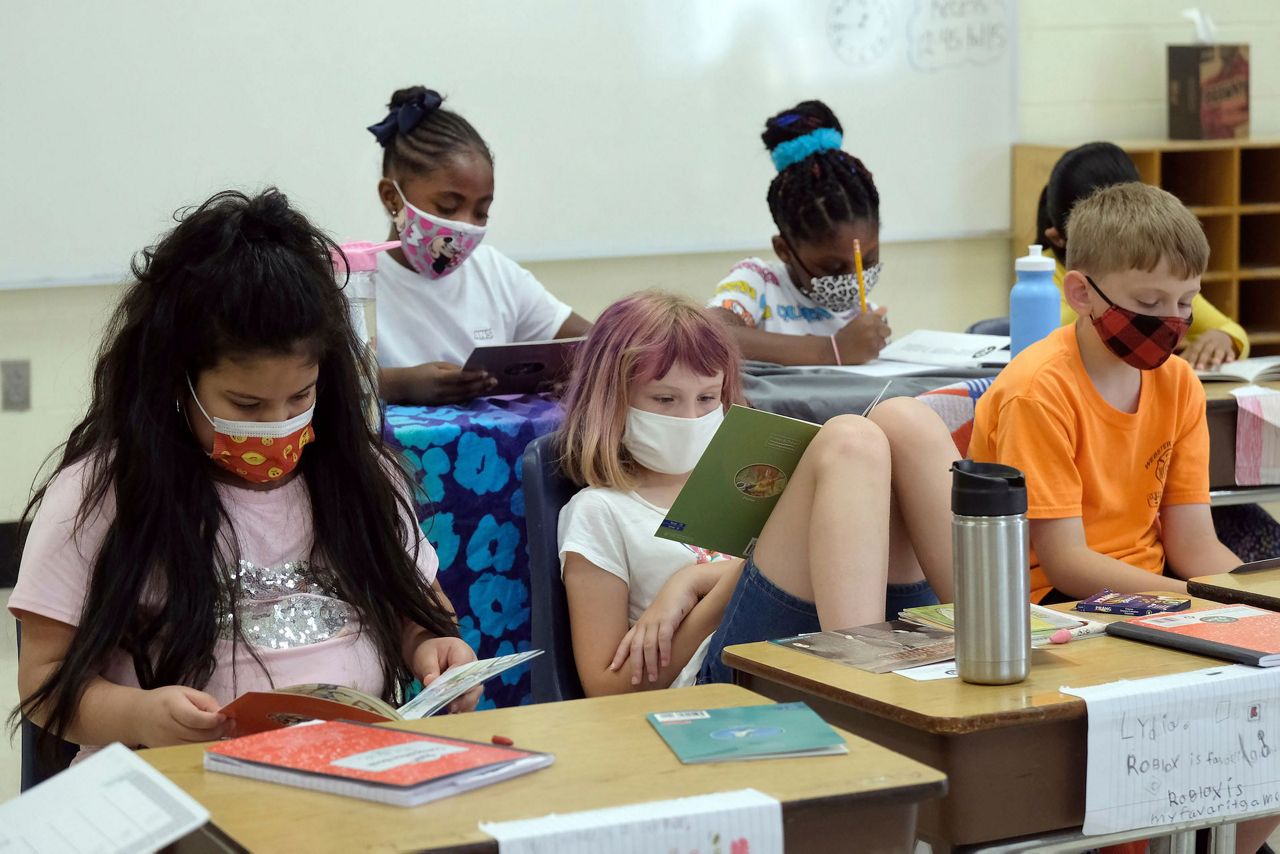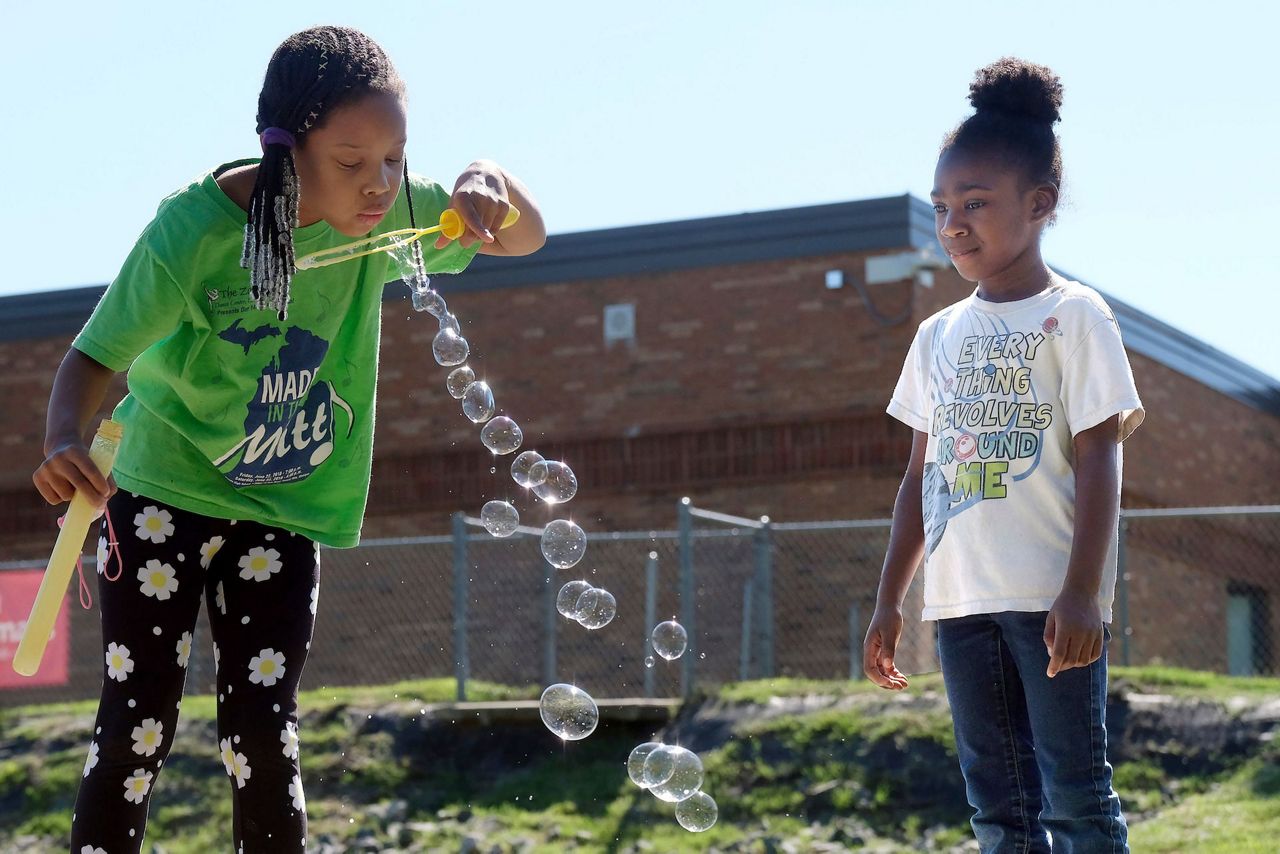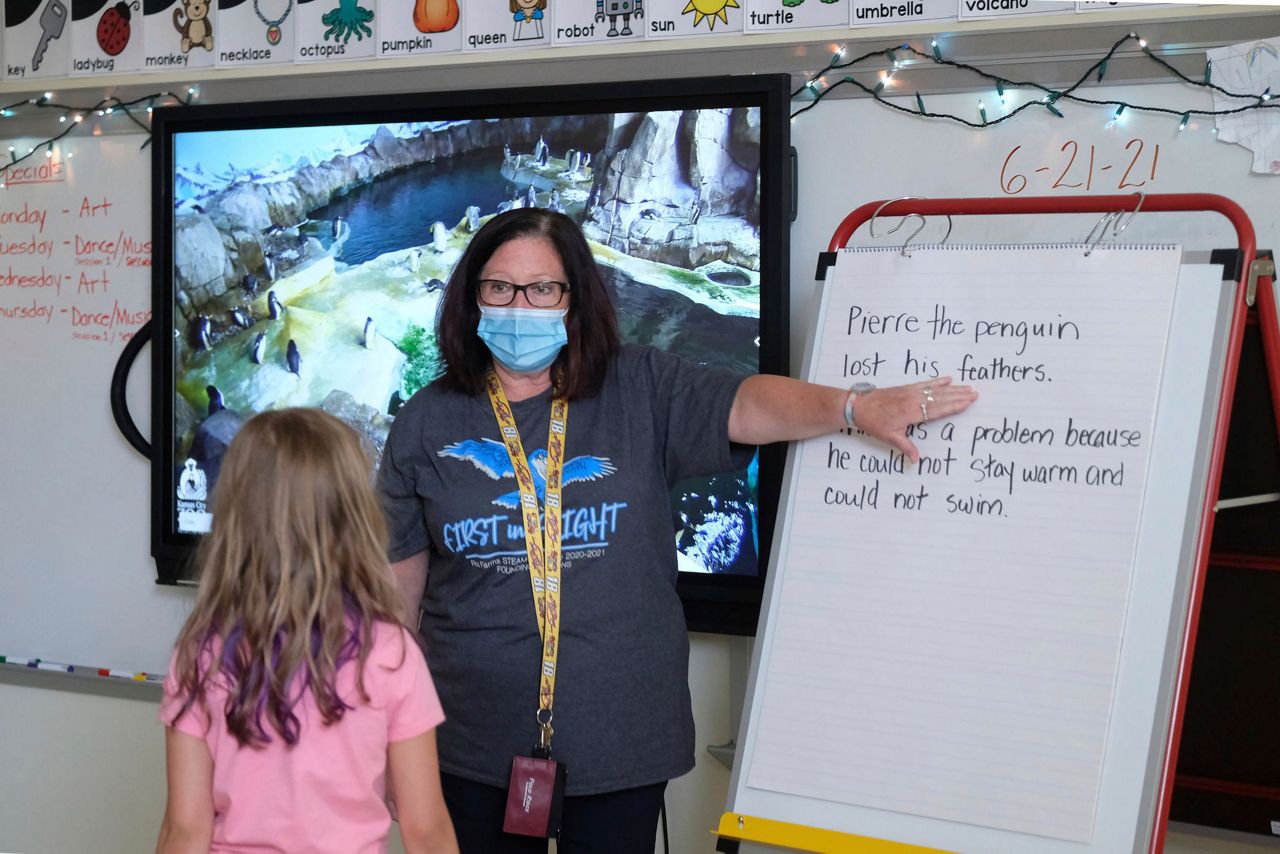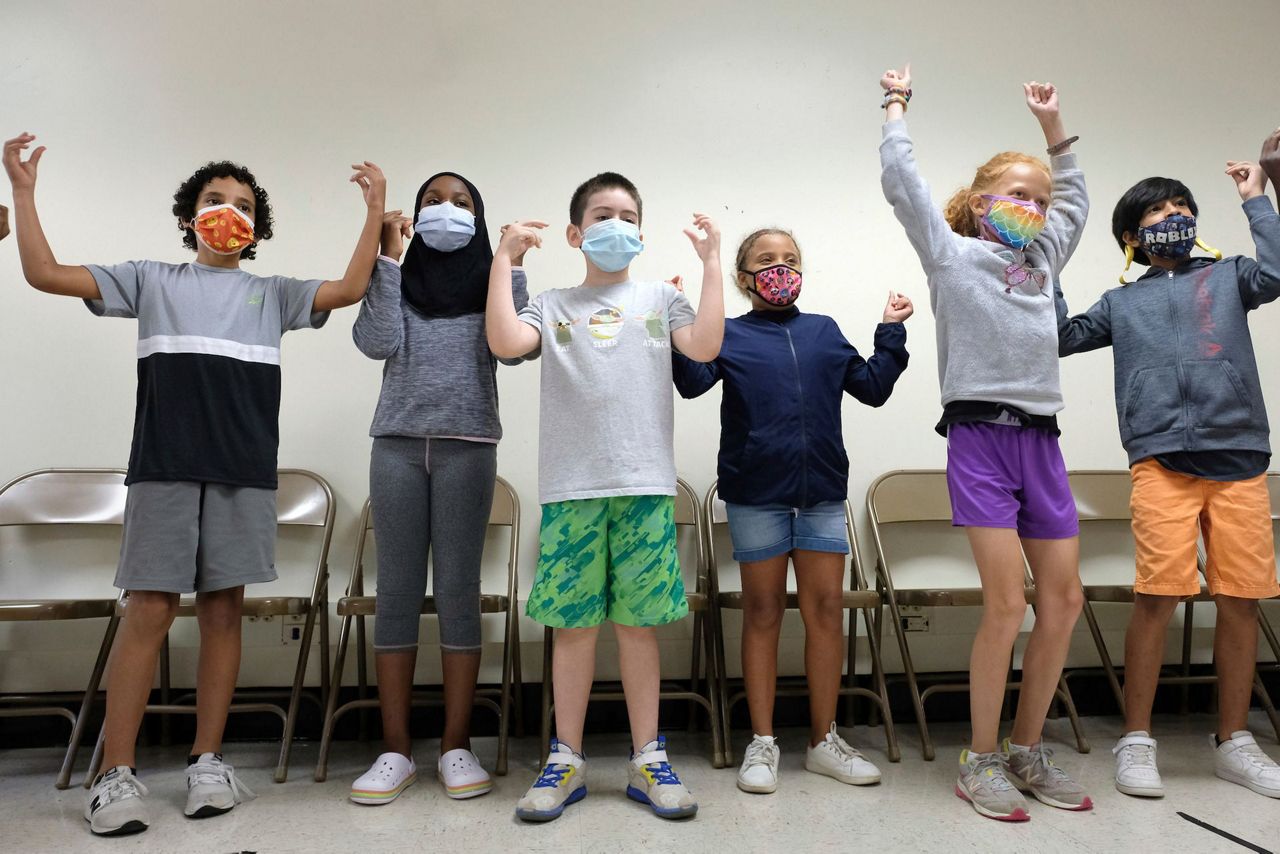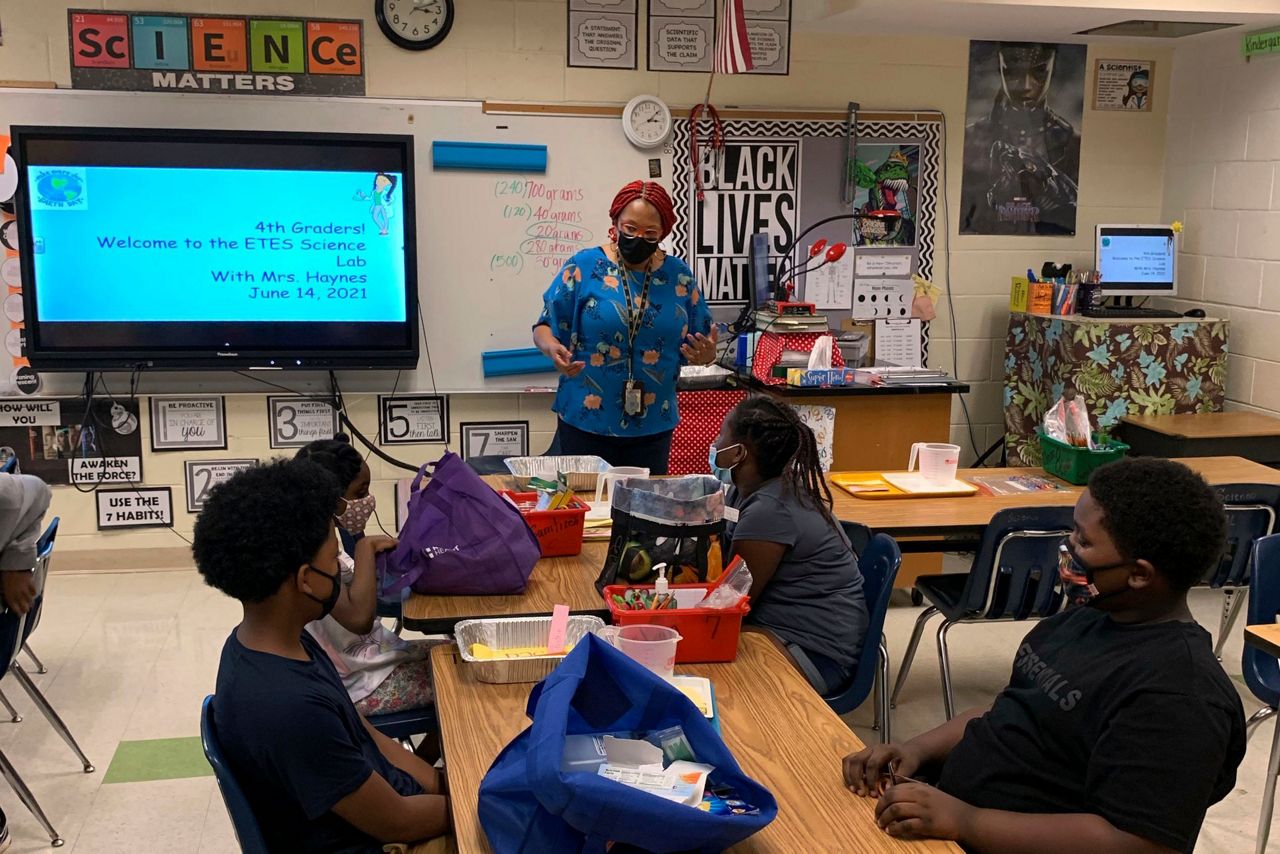CHARLOTTE, N.C. (AP) — After another pandemic-disrupted school year, organizers of vastly expanded summer learning opportunities are investing heavily in efforts to make them accessible to the most vulnerable students.
While there have been success stories, the programs have faced many of the same challenges that educators have been up against since the pandemic hit: Attendance has been inconsistent, some families have lost interest, and COVID-19 still has many reluctant to let students learn in-person.
Educators also have had to address persistent barriers to access for summer programs for families that juggle work and child care and have limited access to transportation.
“We’re starting from a really unequal playing field,” said Halley Potter, a senior fellow at The Century Foundation who studies educational inequity. “There’s a lot that school districts have to do, and community organizations that are running these programs as well, in order to help pick that up.”
The summer programs offered by schools and community groups are powered by an infusion of private and public funding — including billions of dollars in federal stimulus money — to help students catch up on learning. School districts targeted their outreach to students identified as high needs, including students with failing grades in core classes or in high-poverty neighborhoods.
When Peñasco Independent School District, which serves roughly 350 students in New Mexico, announced a summer program this year, demand overwhelmed the number of slots until the district doubled the number of seats available.
But of the 85 children signed up, more than half would not be able to attend if it weren't for district-provided transportation services.
In Peñasco, pervasive intergenerational poverty has pushed school districts to embrace the so-called “community schools” model that provides services like counseling, transportation, internet access and other resources, ensuring participation in school programs.
In the rural district, community schools director Michael Noll said, some families don't own a car. Some who do have periods where they can't afford gas. And others are often juggling work and child care, unable to constantly shepherd kids back and forth.
The district runs three buses to make sure those 50 kids can attend. Like many families in these rural foothills of the Rocky Mountains, social worker Carmen Lyn Romero lives on a dirt road too narrow for a school bus.
Romero, who balanced taking care of her five children with serving nearby tribal reservation Picuris Pueblo, relied on an SUV the district sent to pick up her children.
“The school has been so accommodating to my kids, to pick them up and drop them off. I can’t do that,” said Romero, 28.
Even before the pandemic, students' summer experiences divided heavily along socioeconomic lines. Middle and upper class students typically experience learning gains over the summer and are more likely to have access to summer enrichment, Potter said.
In contrast, low-income students typically see learning loss, Potter said. Families often struggle to find slots in affordable summer enrichment programs, where demand can readily outpace the number of available seats.
The dramatically expanded number of seats available through school districts this year eased some of those pressures, and targeted outreach policies aimed to get high-needs students into those slots.
Charlotte-Mecklenburg Schools typically does not host a summer session, but offered more than 30,000 slots this year to any student interested and saw an average daily attendance of around 15,000.
While any student could sign up and get a seat, the district identified those with Ds or Fs in core classes, students with unstable housing or who were chronically absent, and students with special needs for individual outreach, including home visits and phone calls to inform families about registration.
About 65,000 students were identified as at-risk under those criteria, and nearly 20,000 of those children signed up for a summer slot. The program saw an average daily attendance of about 10,000 at-risk students.
Tangela Williams, who is overseeing summer programming, said that because attendance was not mandatory, some students came only on certain days of the week or started during the middle of the 24-day program. While some parents said they were simply no longer interested, staff members contacted each family if a student missed three consecutive days to provide any support needed in case the student wanted to return.
Williams said that while there were limits to what could be done, she hoped the experience would go beyond teaching content and help students make the transition back to in-person learning.
“A percentage of our kids who are attending summer camp were full-remote kids during the school year,” Williams said. “Having them in school this summer is a way to reacclimate them to school life with new processes and socialization that they’re going to have with their peers.”
The impact of extended school closures and the coronavirus pandemic has fallen unevenly across communities. Black and Latino families, who were more likely to get sick or face serious health consequences from the virus, tended to keep their children in remote learning at higher rates even as districts increasingly offered in-person options.
Building relationships and trust with families was crucial to reengaging students who had largely been disconnected from the school system, said Kendra Banks, chief of arts and learning academies at Young Audiences of Maryland, which partners with Baltimore City Schools to run arts-integrated educational summer camps.
Some parents were still hesitant to send their children back to in-person programming because of the coronavirus, Banks said. The program offered weekly testing and walked parents through all the additional safety protocols to reassure them, Banks said.
“We went above and beyond what the requirements were to make sure that the sites were safe and to assure them that we will be practicing the necessary protocols,” Banks said. “It was calling and having personal conversations with each family about any questions they had.”
Districts also used the boost in funding to expand the types of programs they were able to offer. Aaron Philip Dworkin, CEO of the National Summer Learning Association, said that in addition to barriers to access, inequities can be driven by the cost of more intensive programs, such as residential experiences on university campuses.
While those programs can expose students to new subjects and the college experience, they are often inaccessible to low-income families.
“It shouldn't be that the kids who have the least resources now have to do the least engaging types of programs,” Dworkin said.
In San Diego Unified School District, students spent half the day in the classroom and the other half in summer camp-style programming organized by a wide array of nonprofit organizations.
Andrew Sharp, the district's chief public information officer, said those partnerships made experiences like surfing, flying a drone and learning about wildlife conservation accessible to families who normally cannot afford the cost of similar summer programs.
After a difficult year, Sharp said, he hoped the students could focus on finding the joy in reconnecting with their peers in addition to the academics.
“We really wanted to put the emphasis on bringing programs to some of our historically disadvantaged communities,” Sharp said. “And at the same time, we wanted to provide kids with the best summer of their lives.”
___
Ma covers education and equity for AP’s Race and Ethnicity team. Follow her on Twitter: https://www.twitter.com/anniema15
___
Cedar Attanasio contributed reporting from Santa Fe, New Mexico. Attanasio is a corps member for the Associated Press/Report for America Statehouse News Initiative. Report for America is a nonprofit national service program that places journalists in local newsrooms to report on under-covered issues. Follow Attanasio on Twitter: https://twitter.com/viaCedar
___
The Associated Press’ reporting around issues of race and ethnicity is supported in part by the Howard Hughes Medical Institute’s Department of Science Education. The AP is solely responsible for all content.
Copyright 2021 The Associated Press. All rights reserved. This material may not be published, broadcast, rewritten or redistributed without permission.



